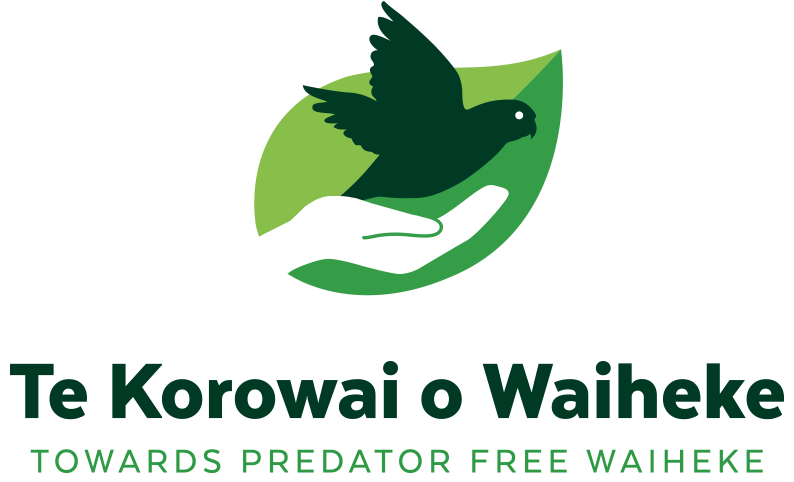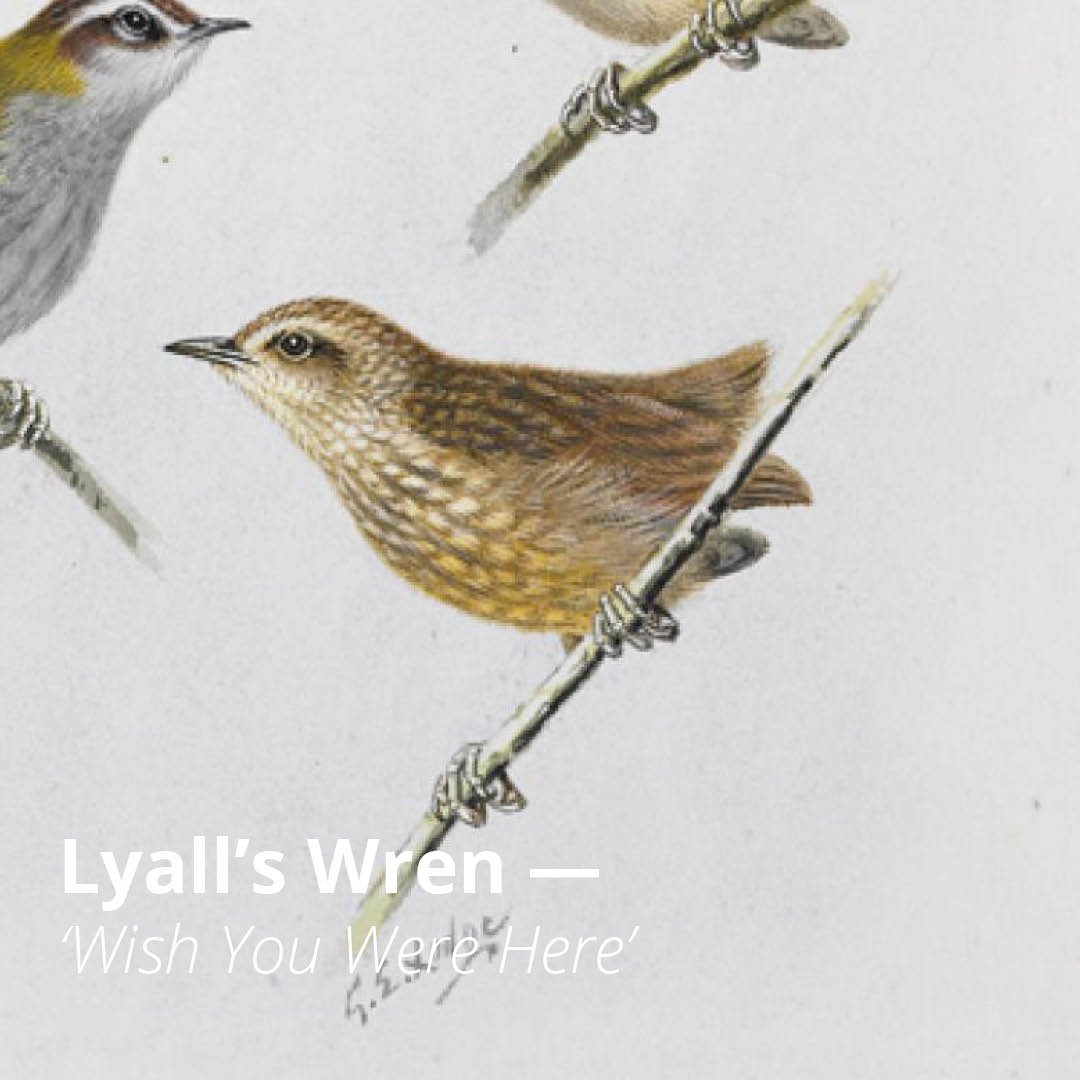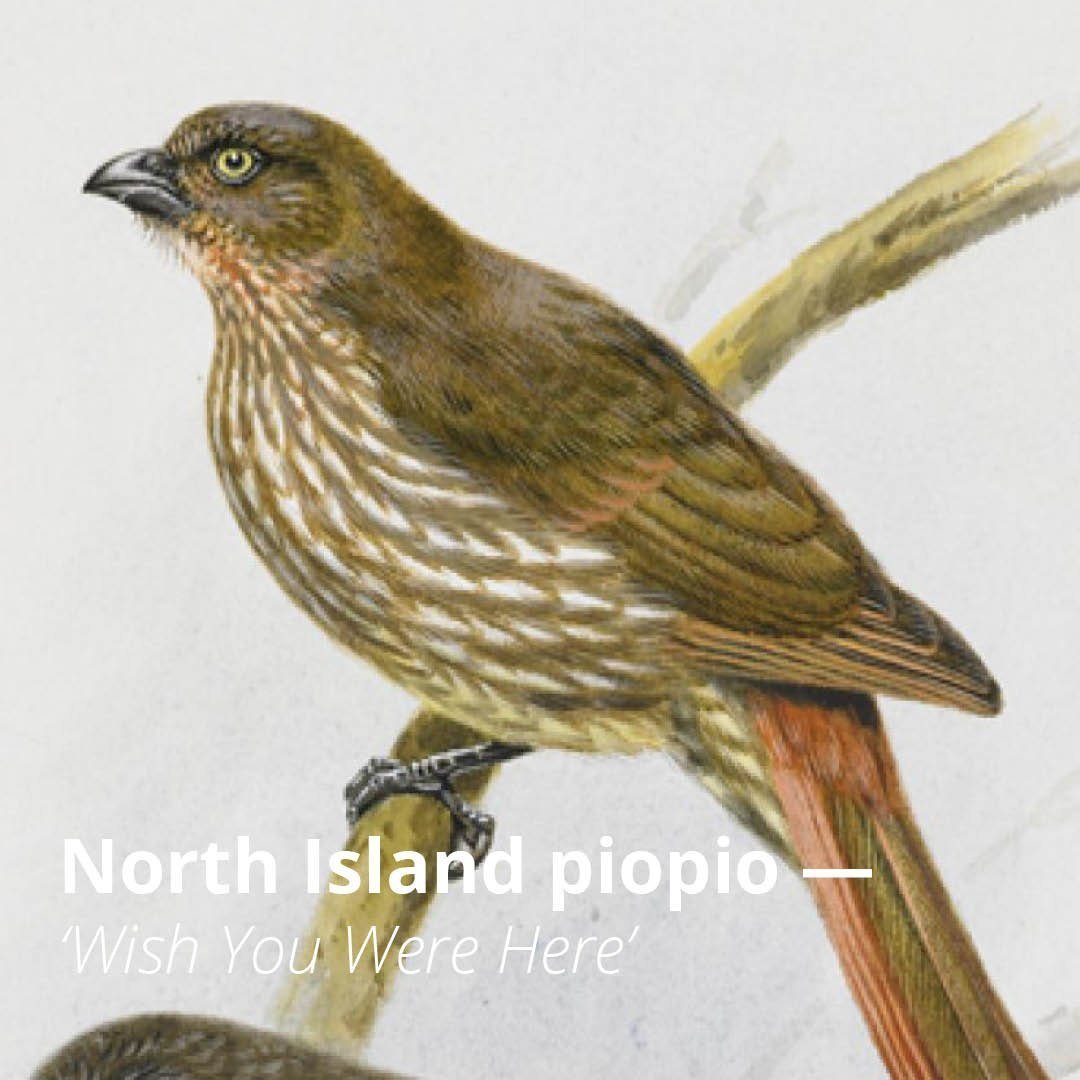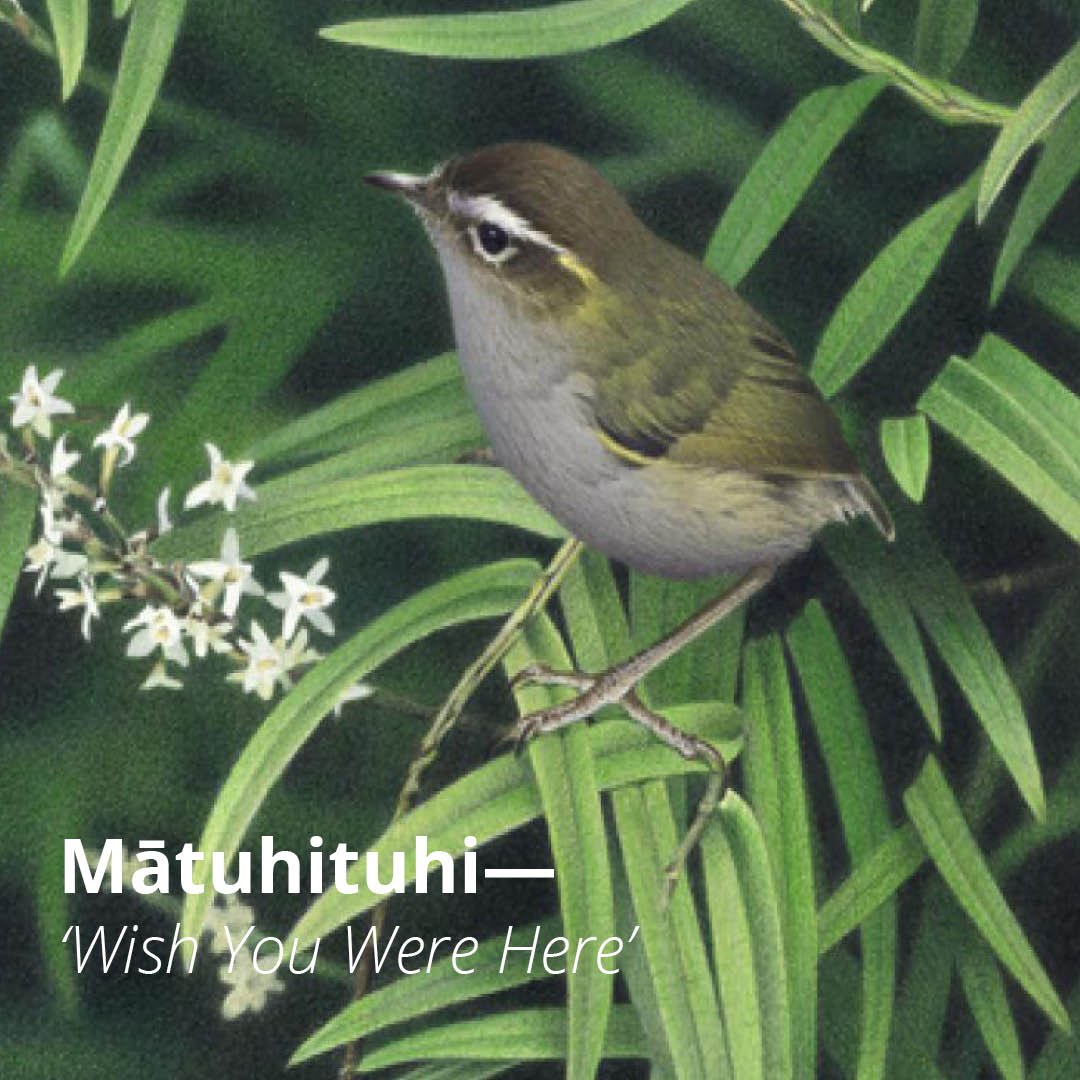An Extinct Species of New Zealand Showcase — Wish You Were Here
In this latest series - Extinct Species (Wish You Were Here) - Te Korowai o Waiheke pays homage to some of the extraordinary species that once graced Aotearoa, but were tragically lost largely due to the introduction of mammalian predators.
Huia. Image 2006-0010-1/11 from the series 'Extinct birds of New Zealand'. Masterton. Image © Purchased 2006. © Te Papa by Paul Martinson
Over the past 750 years, New Zealand's animal diversity has dropped significantly, with almost half of its species disappearing. TeAra.govt.nz (Encyclopedia of New Zealand) states that approximately 51 species of birds have become extinct.
The aim of this series is to shed light on the devastating impact of predators on our native flora and fauna while also raising awareness about the ongoing efforts to ensure the remaining species don’t suffer the same fate.
No.1 Extinct species — Huia (New Zealand Woodpecker)
Today, we remember the iconic huia, whose melodious calls once filled the forests. With their striking black plumage, orange wattles, and long, curved bills, these magnificent birds were a symbol of prestige and harmony in Māori culture. Tragically, largely due to the relentless pressure from invasive predators like stoats and rats, the huia vanished in the early 1920s.
The huia was an omnivorous bird, feeding on a varied diet that included insects, fruits, and nectar. They were particularly known for their specialised feeding behavior, using their long, slender bills to probe and pry into tree bark and decaying wood in search of insect larvae and grubs. The male and female often foraged together, with the male assisting in exposing insects for the female.
But there is hope on the horizon. Today, the huia stands as an iconic symbol of extinction and the importance of conservation efforts to protect and preserve the remaining native flora and fauna of New Zealand. As we bid farewell to the huia, everyone involved in the Predator Free 2050 vision stands firm in the commitment to ensure that no more species become extinct.
No.2 Extinct species — Kaoriki (New Zealand little bittern)
New Zealand little bittern | Kaoriki. Image 2006-0010-1/26 from the series 'Extinct birds of New Zealand'. Masterton. Image © Purchased 2006. © Te Papa by Paul Martinson
Let us cast our gaze back to the graceful kaoriki, the New Zealand little bittern, whose presence once graced the wetlands. With its secretive nature and stunning plumage, the kaoriki was a sight to behold. Yet, in 1890, this elusive bird disappeared from our shores, leaving behind only memories.
The New Zealand little bittern was a small heron-like bird that was native to New Zealand. It belonged to the family Ardeidae, which includes herons, egrets, and bitterns. The kaoriki was once found in wetlands and swampy areas throughout the North and South Islands of New Zealand. It was primarily active during the crepuscular and nocturnal hours, using its keen sense of sight and hearing to hunt for small fish, frogs, insects, and other aquatic invertebrates in the shallows of wetlands and marshes.
As we remember the kaoriki, we are reminded of the urgent need to protect our delicate ecosystems. The Waiheke community, volunteers, contractors, Te Korowai o Waiheke staff, and other Predator Free 2050 Limited projects across the country are working tirelessly to remove mammalian predators such as stoats and rats, ensuring that other unique species do not share the same fate.
No.3 Extinct species — North Island Snipe
Once, the North Island snipe adorned The North Island’s rugged landscapes with its long beak and distinctive mottled plumage. Yet, the relentless invasion of mammalian predators like stoats and rats largely silenced the haunting calls of this enchanting bird in the 1970s.
Image 2006-0010-1/53 from the series 'Extinct birds of New Zealand'. Masterton. Image © Purchased 2006. © Te Papa by Paul Martinson
The North Island snipe belonged to the family Scolopacidae, which includes sandpipers, curlews, and other shorebirds. The Snipe was primarily nocturnal and was known for its secretive and elusive nature. During the day, it would hide among vegetation, remaining motionless to avoid detection. At night, it would emerge to forage for insects, worms, and other small invertebrates in wetlands, mudflats, and forest floors.
Today, we carry the memory of the North Island snipe as we march forward in our battle against invasive predators. As everyone involved in eradicating predators from the island strives to restore Waiheke's natural balance, they are ensuring that the North Island snipe's fate becomes a turning point, not a tragic finale. By preserving our precious biodiversity, we can script a new chapter for Waiheke - one of hope, revival, and the joyous return of the once-cherished birdsong.
No.4 Extinct species — Lyall's Wren
Lyall's wren. Image 1992-0035-2366/76. United Kingdom. Image © © Te Papa by George Edward
In the 1800s, the diminutive Lyall's Wren, a flightless wonder, hopped amongst the dense undergrowth of the forests. Despite its small size, this unique native and flightless bird held a significant place in the ecosystem. Sadly, the Lyall's Wren was driven to extinction in 1895.
Being flightless, Lyall's Wren was well-adapted to life on the ground and spent much of its time foraging for insects, spiders, and other small invertebrates among the leaf litter and undergrowth of the island's forests. Due to the absence of mammalian predators on Stephens Island, Lyall's Wren had no natural fear of terrestrial threats, making it particularly vulnerable to introduced predators.
Projects like Te Korowai o Waiheke and initiatives such as Predator Free 2050’s commitment to eradicating invasive predators signifies the collective hope for a future where no more species meet the same fate as Lyall's Wren. Together, alongside volunteers, contractors, and the entire community, a sanctuary is being worked towards on Waiheke Island for our remaining unique and ancient species to flourish.
No.5 Extinct species — Bushwren (mātuhituhi)
The bushwren, known as "mātuhituhi” in Māori, was a small, flightless bird endemic to New Zealand. Once, the lively song of the bushwren (mātuhituhi) graced Aotearoa’s ancient forests and scrub in mountainous areas.
The bushwren was a tiny bird, measuring around 12 to 15 centimeters) in length, making it one of the smallest known wren species. It had a slender body with short wings and a short tail. Its plumage was olive-brown and finely streaked, providing excellent camouflage in its habitat. Being a flightless bird, the bushwren was exceptionally agile on the ground, hopping and running swiftly through the undergrowth. It was primarily insectivorous, feeding on a variety of insects, spiders, and small invertebrates found in the leaf litter and foliage of the forest floor. The bushwren's secretive and elusive nature made it challenging to spot and rarely ventured into open areas.
As ground-dwelling birds, they were particularly vulnerable to introduced mammalian predators, which preyed on their eggs, chicks, and adults. The exact date of the bushwren extinction is uncertain, but it is generally believed to have occurred in the mid-1900s. The last confirmed sighting of the bushwren was on Stephens Island in the Marlborough Sounds in 1972.
The loss of the bushwren represents another sad example of the consequences of invasive predators like stoats and rats on New Zealand's native birdlife. Efforts to protect and restore the remaining native flora and fauna have become vital in preserving the islands' unique biodiversity. Projects like Te Korowai o Waiheke and the broader Predator Free 2050 movement aim to create a safer future for the remaining species, ensuring that no more extraordinary creatures, like the bushwren, disappear from our natural world.
No.6 Extinct species — North Island piopio (the native thrush)
The North Island Piopio was a vivacious songbird endemic to New Zealand. Once, the North Island piopio's cheerful calls resounded throughout the North Island, from the lowlands to the montane forests.
The piopio was known for its tame and confiding nature, often seen actively foraging for insects, berries, and other small prey in the forest undergrowth. They were skilled at climbing trees and used their curved bills to search for food in bark crevices. Their vocalisations were a delightful mix of trills, whistles, and melodious songs that filled the forest with their cheerful presence.
The introduction of invasive predators, such as stoats and rats, during the 19th and 20th centuries had devastating consequences on the piopio. These predators hunted eggs, chicks, and adult birds, causing a significant decline in the Piopio population. The North Island piopio is believed to have gone extinct in 1902.
The extinction of the North Island piopio is a poignant reminder of the impact that introduced predators can have on delicate ecosystems. Its loss underscores the urgency of conservation efforts to protect and restore New Zealand's unique biodiversity and preserve other native species from a similar fate. Initiatives like Te Korowai o Waiheke and other Predator Free 2050 projects play a crucial role in safeguarding the remaining biodiversity, ensuring a brighter future for the native flora and fauna of New Zealand.






